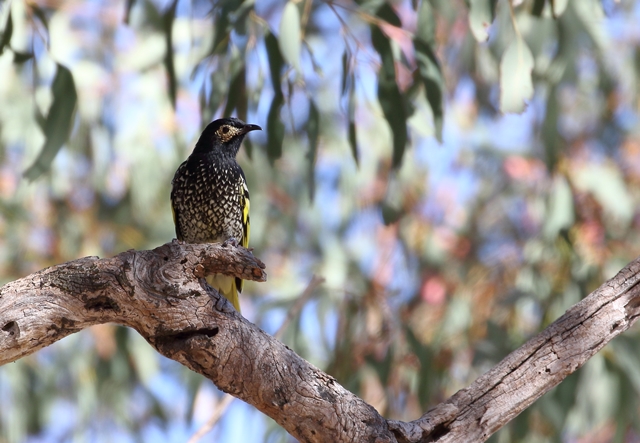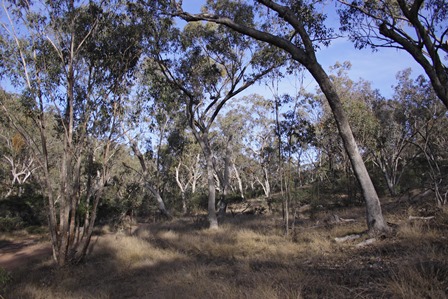Woodland Birds on Farms
Helping Regent Honeyeaters survive
The 'Woodland Birds on Farms' project brings together species experts and the community to help the Regent Honeyeater and other declining woodland bird species survive in the Capertee Valley, Mudgee-Wollar and South-west Slopes Key Biodiversity Areas on the Central Tablelands.
The project builds on many years of community dedication to woodland bird conservation in the Capertee Valley, a critical breeding area for the species, and expands the success of this work into other areas important to the Regent Honeyeater.
We work together with landowners to protect, enhance or create woodland bird habitat to increase the quality and quantity of habitat available in the future.
The project raises awareness of Regent Honeyeaters and the threats to their habitat and engage landowners to actively manage and monitor the Regent Honeyeater habitat on their land.

Regent Honeyeater, Capertee Valley NSW (credit: Matthew Baker)
The Regent Honeyeater
The Regent Honeyeater (Anthochaera phrygia) is a medium-sized honeyeater endemic to south- eastern Australia. It is a semi nomadic “rich patch specialist” most commonly associated with box-ironbark woodland and dry sclerophyll forest.
Once found in the thousands as far north as southern Queensland and as far west as Adelaide, research demonstrates the species has suffered a population decline of greater than 80% in recent years and has now reduced to only 350-400 wild individuals (Regent Honeyeater National Recovery Plan 2016). As a result, it is currently listed as critically endangered under NSW and Australian legislation. It is also listed as critically endangered on the International Union for Conservation of Nature (IUCN) Red List of Threatened Species.
Across its range, the species is known to return to the same areas to breed. The Capertee Valley is one of the species’ key breeding area and therefore of great importance to the species survival. Breeding has also been recorded in the Mudgee-Wollar Key Biodiversity Area.
What are we doing to help the Regent Honeyeater?
Habitat loss and degradation is one of the key threats to the species and together with landowners and the community, we work to slow this process in our region.
A high priority is to identify remnant vegetation that can be protected from degradation (clearing or inappropriate management) within the Key Biodiversity areas, which are important habitat for the Regent Honeyeater.
In areas where Regent Honeyeaters are known to nest, we will also look at creating more habitat to ensure young Regent Honeyeaters will have plenty of food when they can’t fly too far to search for it.

Box Gum woodland in the Capertee Valley is important regent honeyeater habitat (credit: Dean Ingwersen)
How can you be involved?
We will be holding bird identification workshops and other educational activities, so give us a call if you want to be kept informed about any happenings in your area.
For more information please contact:
Vivien Howard on 0439 387 603 or via email vivien.howard@lls.nsw.gov.au
This project is supported by Central Tablelands Local Land Services through funding from the Australian Government's National Landcare Program and delivered in collaboration with Central West Local Land Services and a range of project partners.
